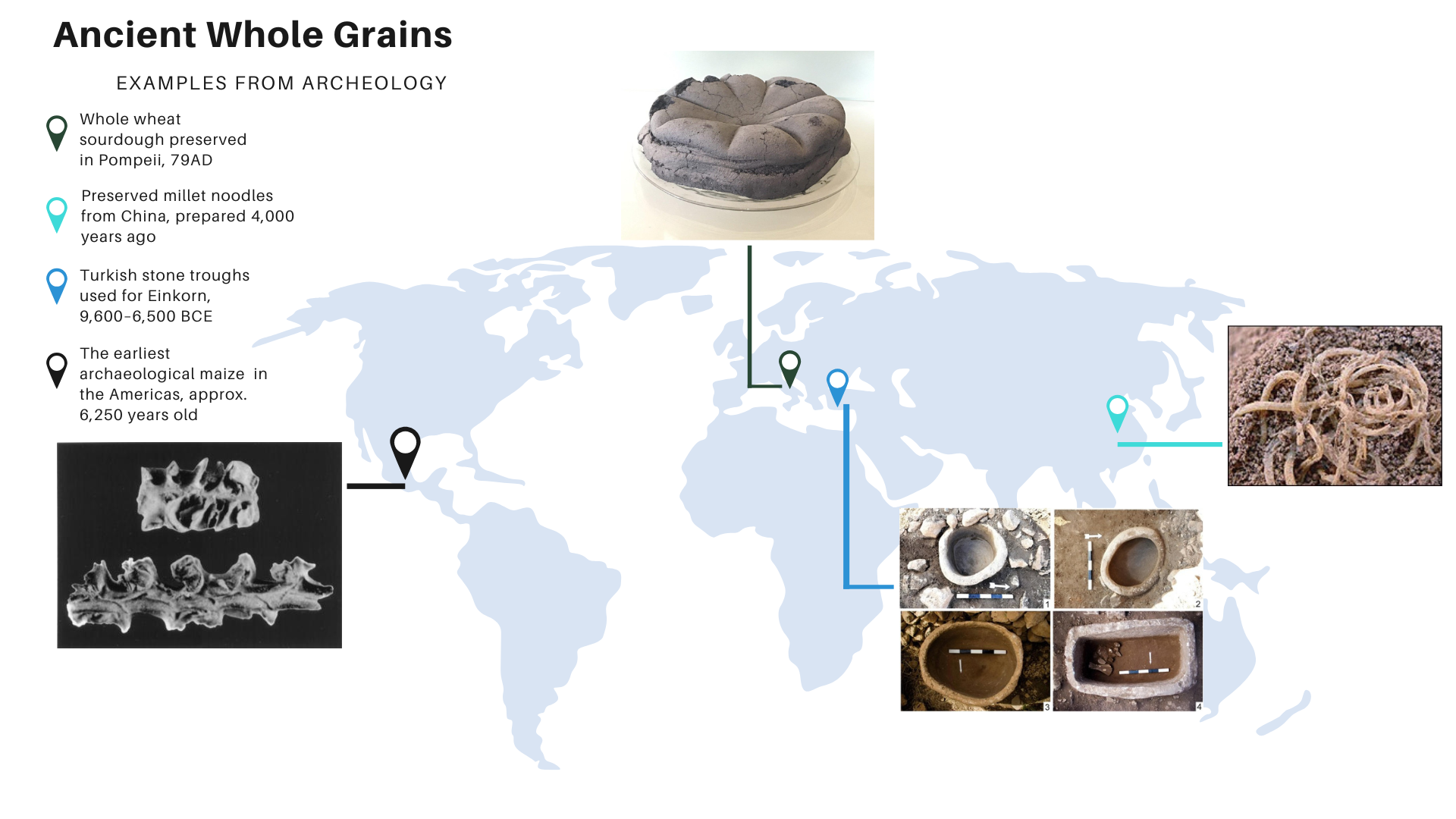Share This
If you were to go back to Southern Italy in 78 A.D., one year before the explosion of Mt. Vesuvius, there would be many differences from our modern era. There would be no plumbing, no electricity, no zippers on clothing, and no partially hydrogenated oil. Grocery shopping would be different, as would your meals. One thing you would recognize, though, in the ancient city is bread, sold at stands along Pompeii’s streets, baked with whole grain—their only option as refining technology had not yet been invented. That’s one thing we have in common with these ancient civilizations: whole grains are an important foundation of our diet. As early as 11,000 BCE, humans began farming—and quickly learned what nutritional and societal powerhouses grains can be. With technological innovations like irrigation, the plow, and the sickle, humans learned how to increase agricultural productivity and yield more calories per acre than ever before. This allowed us to flourish and form the ancient societies which paved the way for our modern world. In this modern era, archeologists have uncovered ancient examples of whole grain preparations across the world. Let’s take a look through some of the oldest examples of preserved grains found around the world.
Whole Wheat Bread
Modern archeologists were able to determine that Pompeii exploded on a Wednesday, in part because of the bread that was preserved in the explosion. In Pompeii, a network of about 30 bakeries provided the city with its bread, with a different type baked on each day of the week. The type preserved was Panis Quadratus, the bread served on Wednesdays, which received its name from the four lines that segmented and split the loaf into pieces. Made with a sourdough starter called Popidius, analysis from frescos painted on the walls around Pompeii determined that the bread was most likely flavored with poppy seed, fennel, and parsley.
Millet
In 2002, archeologists discovered a preserved 4,000-year-old bowl of millet noodles in China at the archeological site Lajia. This is one of the oldest examples of both noodles and cultivated millet that we have in the historical record. Analysis showed the noodles were made of two varieties of millet—foxtail and broomcorn. While millet is no longer commonly used to make noodles, it is still used for this purpose some regions of northern China.
Corn
In 2001, scientists discovered the earliest example of domesticated corn—a cob from 6,250 years ago. Found in the Guila Naquitz cave in Oaxaca, Mexico, the corn differs from archeologically preserved pre-domestication Teosinite (the wild progenitor of corn) due to its hallmarks of domestication. This includes seeds “held tightly to a rigid cob, and would therefore have depended on humans to break off and plant the seeds.” The discovery of Guila Naquitz corn pushed back the assumed date of corn domestication by almost 1,000 years, and analysis of similar era corn showed these ancient cobs were “on the whole genetically closer to modern maize than to its wild counterpart.”
The Earliest Wheat
The oldest current examples of grain and wheat processing come from Turkey at the Göbekli Tepe site, which is also one of the earliest examples of a religious structure built by Neolithic humans. The immediate region around Göbekli Tepe is where many of the predecessors to modern wheat like Barley and Einkorn (both of which are still eaten today) were domesticated into modern forms. While the story around wheat domestication cannot be attributed to a specific moment in time, Göbekli Tepe showed that wild wheat varieties were being processed almost 2,000 years before our first examples of domestication. Archeologists have uncovered grain processing tools like stone troughs and vessels at the site that were used to process, store, and cook cereal grains undergoing domestication. Analysis of the tools have proven the presence of almonds, pistachios, barley, and einkorn in the troughs; foods consumed by both ancient societies and modern ones.
While modern life can feel alien compared with ancient civilizations, we still have food in common. Ancient civilizations cherished and revered grains for the nutrition they provided, allowing humanity to spread and thrive. Today, we’ve built on this ancient knowledge to learn why grains are so nutritious, and continue to innovate how to grow and process traditional whole grains. Which of these ancient grain examples would you most like to try? Let us know in the comments! (Vik)
To have our Oldways Whole Grains Council blog posts (and more whole grain bonus content!) delivered to your inbox, sign up for our monthly email newsletter, called Just Ask for Whole Grains.


Add a Comment